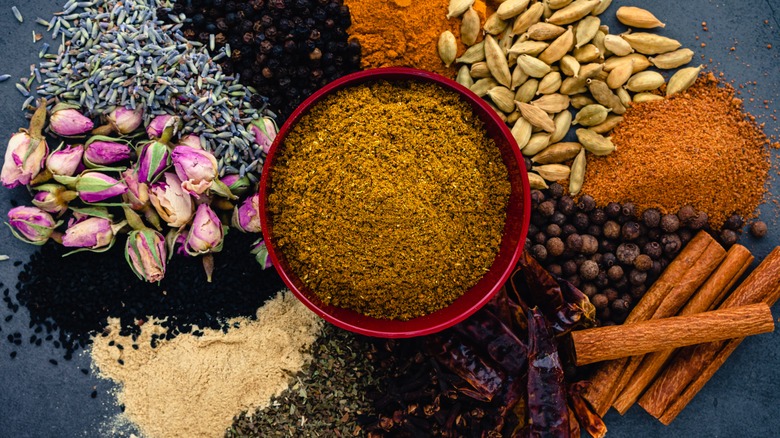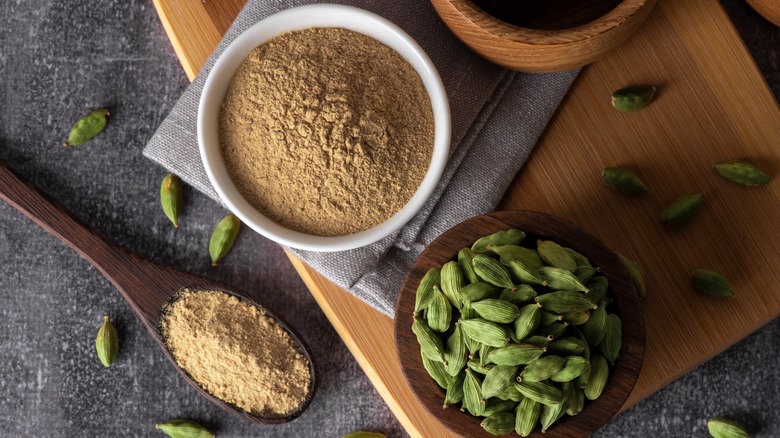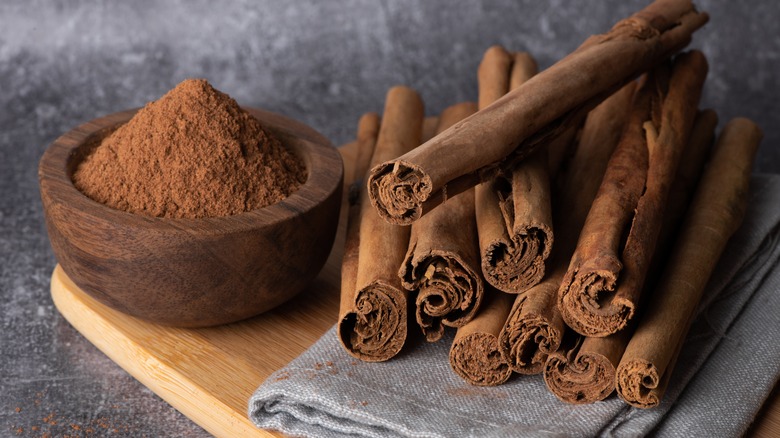When Should You Use Whole Spices Instead Of Ground?
We live in a world of convenience, so why would anyone ever choose whole spices over ground when walking down a grocery store aisle? It doesn't seem overly pleasant to crunch into a peppercorn or bite into a cinnamon stick, which means you need to either grind it into a powder before cooking or remove the spice before serving the dish. And when everyone is looking for the newest kitchen shortcut or hack, it doesn't seem likely that whole spices get much play.
But they do, and that's because they're used for different things. You should use whole spices when you want a fresh pop of flavor or color. Air degrades the flavorful oil in ground spices, so whole spices stay intact longer than their ground counterparts. That's why they offer more complex, truer flavors.
However, cooks and home chefs alike reach for ground spices when they want them to blend rather than stand out in the dish. They're best used to create an evenly dispersed flavor profile.
Which is best for which recipes?
Since ground spice tends to be more muted, use it in recipes that call for a smooth blend of flavors. It's especially great for baking since you want to be greeted with a whisper rather than a punch of cinnamon. The same holds true for certain sauces and soups that call for a subtle infusion of flavor. However, if you're looking for a bright pop of interest, switch to whole spices.
It also depends on the cooking time of your recipe. You want to use whole spices for long-cooking recipes, like curries, soups, stews, and crock pot dishes. These spices release their flavors more slowly, helping to infuse the dish. Think holiday hams with star anise and stews with bay leaves and peppercorn.
However, if you have a short cooking window, it's best to use the powdered stuff. You can add ground spices through different stages of the recipe, adding layers of flavor even if the sauce or cut of meat is on the stove for 15 minutes or less.
How to sub them in recipes
If you have a recipe that calls for whole spices, but you only have their ground counterparts, fear not. You can easily sub them. If a recipe calls for 1 tablespoon of whole cinnamon, cut the volume by 25%. That's because quality ground spices are more concentrated. Their oils were exposed when ground, so the flavor is more readily available. That's why whole spices take a long time to permeate the dish and call for slow-cooking recipes. Of course, starting with less and adding more after you taste is safer. You can also cut the volume by 50%, taste the outcome, and slowly add more until you get your desired effect.
Subbing whole spice for ground is a little more complicated. Generally, the smaller the spice grain, the closer you are to a 1:1 ratio. Think mustard seeds or allspice. Bigger spices require a bit more guesswork.
According to Food52, a 1 ½-inch (4-centimeter) stick of cinnamon is equivalent to 1 teaspoon of ground cinnamon powder, and 12 husked cardamom pods are the equivalent of 1 teaspoon of ground cardamom. You can also reduce the amount by ¼. For example, if the recipe calls for 1 ¼ teaspoon of ground fennel, grind only 1 teaspoon of whole fennel.


